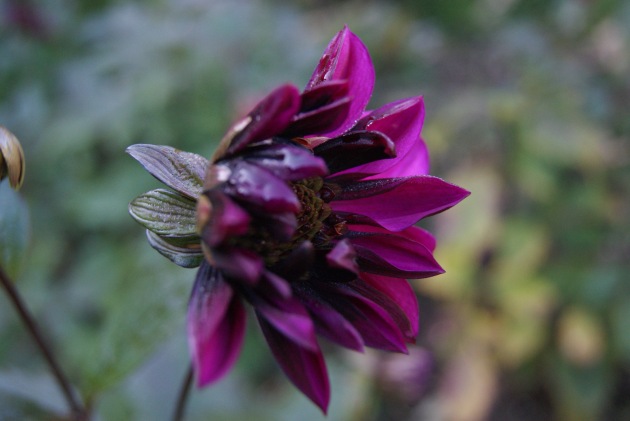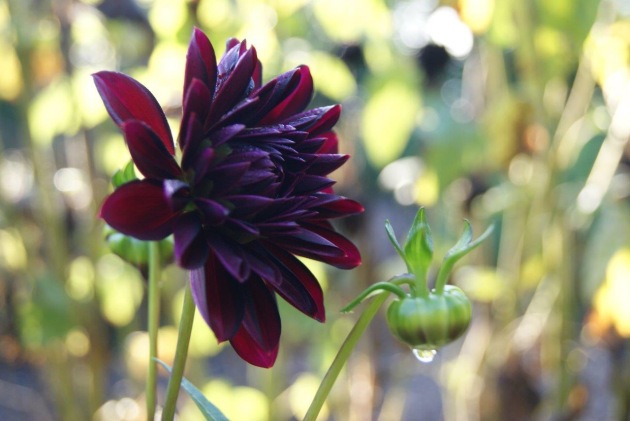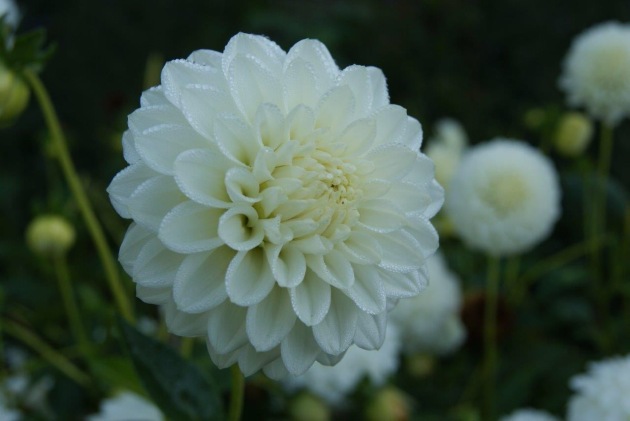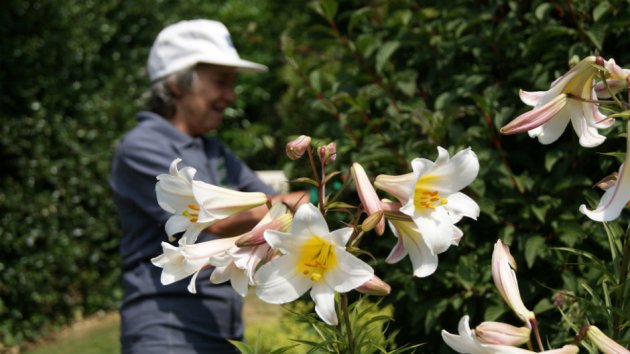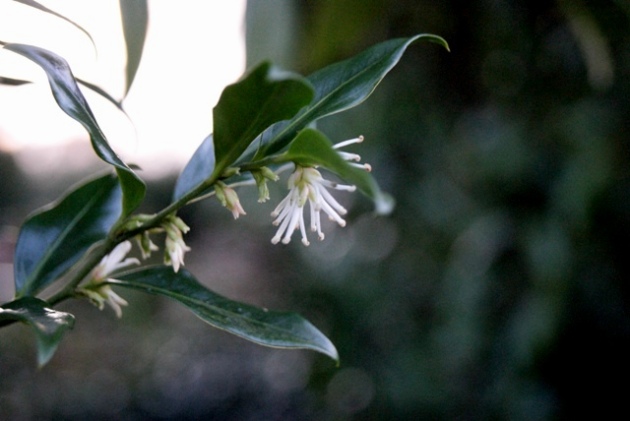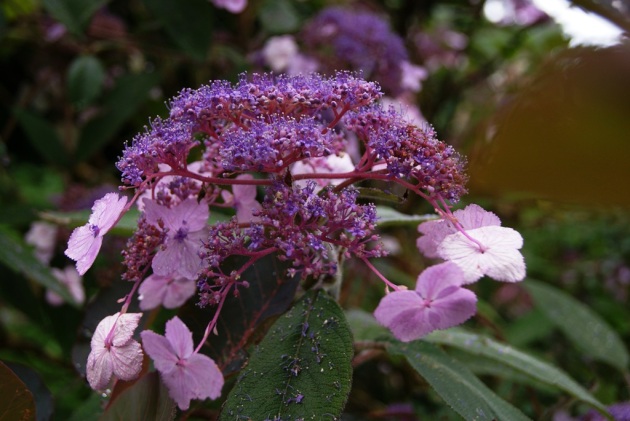
Above: Hydrangea aspera Villosa group
Byron once commented, with typical (but unfair) panache:
The English winter – ending in July,
To recommence in August.
Byron’s audience expected a certain insouciance, I suppose, but really…..our English summers aren’t that bad and, anyway, it’s simply too easy to chalk up cheap shots at your homelands’ expense whilst dandying around under endless Mediterranean blue skies and sunshine.
To further dispel too cynical an interpretation of the English summer, my sense is that the gardens at Uppark are absolutely thriving; the chalky, hilltop location places a premium on the natural bounty of summer rainfall and this, combined with generally warm days and plentiful daylight, has conspired to keep things in good shape without the need to use the scarce water resource unnecessarily.
Additionally, we’ve been having such a happy time working together in the garden. Andy has assembled a Thursday team which combines some fairly serious garden knowledge and the capacity for solid work with a delightful bonhomie, a large slice of marvellous cake and biscuit baking skill, impeccable gardening couture, a shared sense of humour and a mutual capacity for (generally good humoured) grumpiness. We like to talk to our visitors, they tell us how much they’re enjoying the gardens and amazing views, we take encouragement from this, we enthuse some more about what we’re trying to achieve and in so doing radiate back the energy and passion our visitors bring into the garden.
In this sense, the relationship between Uppark and its visitors is a win/win partnership; it’s mutual, self-generating and self-perpetuating.
Hot colours, exotic flavours.
It strikes me that although the plants that put on such a fabulous spring and summer display went over some time ago, August ushers in an even more vibrant stage show despite our reluctant sense that the best of summer may already be in the past. Our August Newsletter contains the really important nuts and bolts detail with regard to the following but here’s a parallel “Learn with David, I really need to try and remember some of this” interpretation.
Fennel (Foeniculum vulgare)
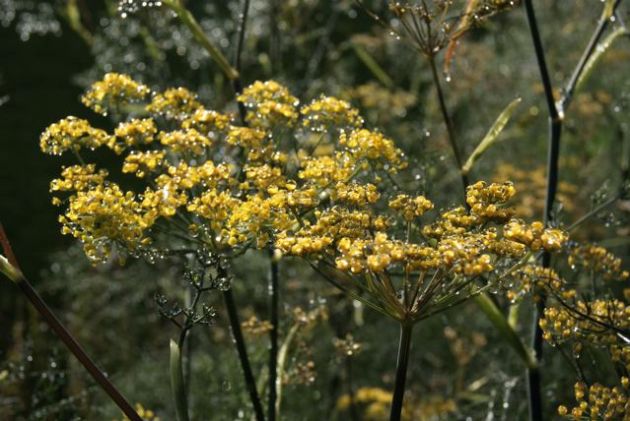
I was aware of the medicinal and culinary uses of fennel (not my favourite taste I’m afraid to say) but until it was pointed out to me, I wouldn’t have guessed that Foeniculum vulgare was a member of the carrot family. Thinking about it now, I can see a wispy resemblance although I don’t associate fennel with yellow flowers (I do now). Having ploughed my way through Herodotus “Histories” a couple of years ago, I was genuinely (honestly!) intrigued to discover that fennels’ Greek name is “Marathon”. This is, indeed, the Marathon we all associate with the great Greek/Persian battle and the Olympic race of the same name. Literally “a plain with fennels” this is a plant indigenous to the Mediterranean (so Byron would have come across it in its natural habitat also).
You can find excellent examples of fennel in our restoration border (to the left of the Coade Urn mound as you enter the garden through the Golden Gate) and in the border in front of the scented garden (on your right as you approach the house down the North drive)
Field Scabious (Knautia arvensis)
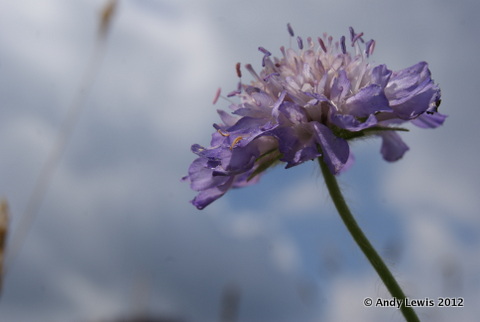
Found in the South meadow and commonly known as field scabious, I was amazed at the number of local and household pseudonyms under which Knautia arvensis is also known; I thought gypsy rose, lady’s cushion and clodweed were amongst the most evocative but there are lots more. Did you know that Knautia arvensis was named after the C17th German botanist Christian Knaut or that scabious comes from the Latin Scabere (literally “scratch”) and that, as a result, certain species have traditionally been used to treat skin afflictions including (unsuccessfully for far too many) Bubonic Plague? (Well….there you go).
Dahlia ‘Arabian Night’
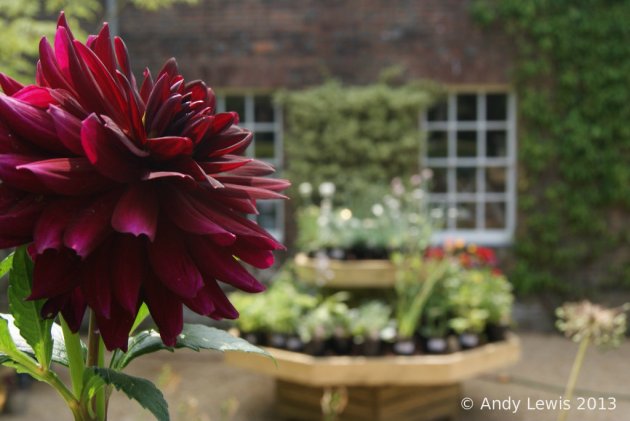
Above: Dahlia ‘Arabian Night’ planted in the tea garden a couple of years ago, it can now be found just outside the cut flower garden.
Now here’s a plant to bring some South American exuberance to Uppark in August. A native of Mexico, Dahlia ‘Arabian Night’ is a member of the Asteraceae family and as such related species include sunflower, daisy, chrysanthemum and zinnia. Until I checked, I hadn’t realised that Dahlia ‘Arabian Night’ uses its deep colour (dark burgundy appearing almost black in a certain light) to make up for its lack of scent. Dahlia ‘Arabian Night’ can be found next to the cut flower garden.
Purple Top (Verbena bonariensis)
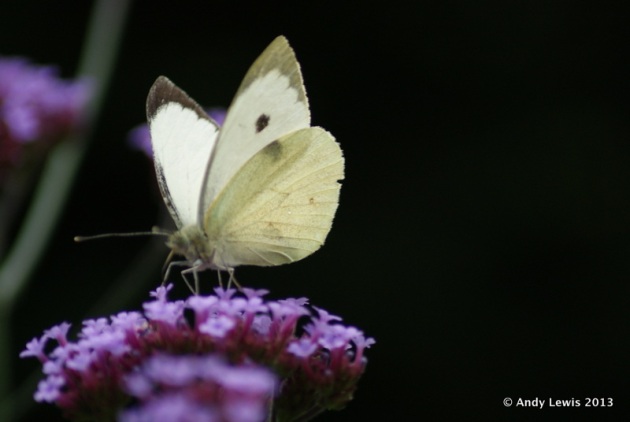
Another native of South America, Verbena bonariensis is one of the most striking plants at Uppark and one of my favourites. Introduced into our Reptonesque restoration border in 2013, Verbena bonariensis nearly always get remarked upon by individual visitors and garden tour groups and it’s easy to see why; its height and vibrant colour make Verbena a real feature plant and since it can be seen from both within and without the garden, it has natural magnetism. Purple Verbena and yellow Achillea are both residents of the restoration border and I think it’s currently a toss up with regard to which attracts the most admiring comments. Verbena readily self-seeds so you can now also find specimens in the tea garden amongst the Acanthus and Nepeta (the butterflies and bees are having a lovely time).
Mexican fleabane (Erigeron karvinskianus)
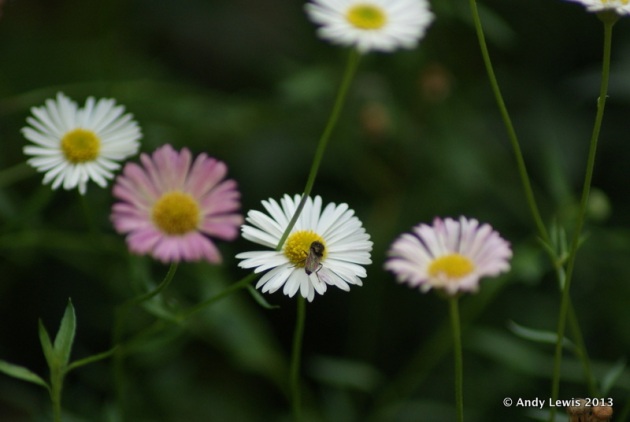
August is certainly South American month at Uppark, hot colours abound, so don’t miss our mexican fleabane which currently flower in tubs outside the ticket office. Also known under various alternative common names including Spanish daisy, Santa Barbara daisy, Karwinsky’s fleabane (after Wilhelm Friedrich Karwinski von Karin who collected the plant in Mexico) and bony-tip fleabane (don’t ask me why!), Erigeron karvinskianus is another member of the Asteraceae family.
Helenium ‘Wyndley‘ and Helenium ‘Moerheim Beauty’
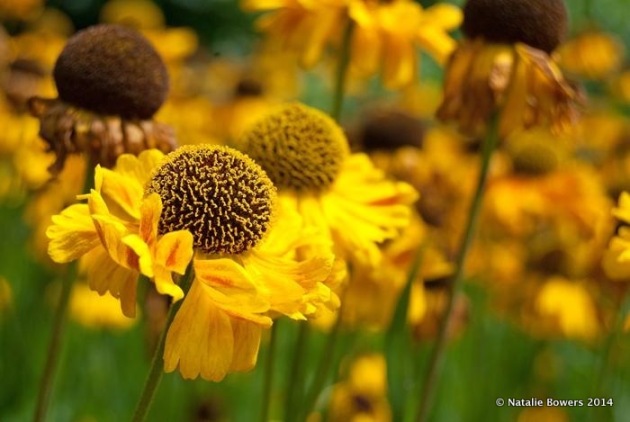
Above: Helenium ‘Wyndley’ Below: H. ‘Moerheim Beauty’
Found on opposite sides of the same mulberry tree island bed, here are two more plants bursting with August colour – yellow in the case of Wyndley, copper-red for Moerheim. I was rather pleased to discover that the epithet Helenium derives from Helen of Troy, the daughter of Zeus and Leda within Greek Mythology. Helen was reputably the most beautiful woman of her time, so beautiful in fact that her abduction kicked off the Trojan Wars! Rather more prosaically, did you know that some Helenium are also known as sneezeweed, due to the fact that their dried leaves were used in the manufacture of snuff? I had no idea…..
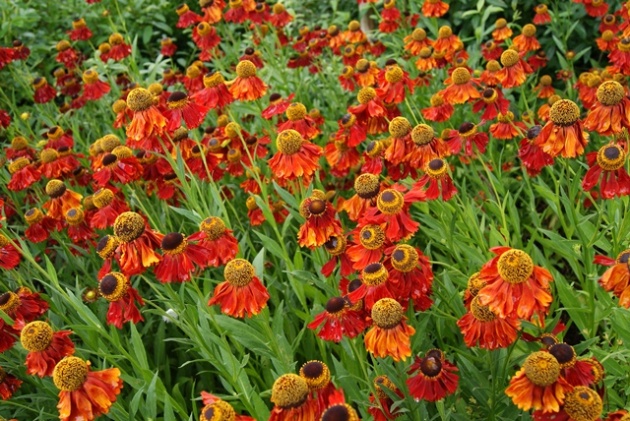
Potentilla thurberi ‘Monarch’s Velvet’
Also known as Strawberry cinquefoil since the foliage looks so like that of a strawberry plant, Monarch’s Velvet flowers from July until September. Given our exposed and dry location, Potentilla thurberi is an ideal plant for Uppark since it can thrive in sunny, drought resistant borders.
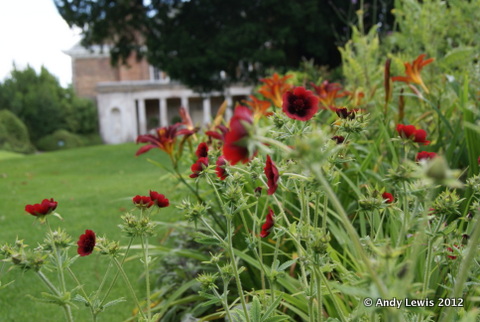
Hydrangea arborescens ‘Grandiflora’
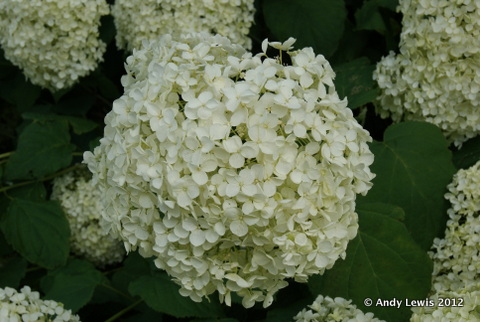
Finally, I tell you, these are looking absolutely fantastic this month and the size of these Grandiflora heads have to be seen to be believed. Beautiful specimens can be seen in the island beds and the display that’s currently being put on in the tea garden is wonderful. Last year we didn’t do any deadheading or cutting back for some time after the plants had gone over since their dried brown heads continue to provide real architectural interest. We get amazing value from this beautiful plant.
We’re receiving fabulous feedback from our visitors; they’re clearly enjoying the way the garden is evolving, the vision Andy is implementing and the direction in which we’re going. Although I’ve known the gardens at Uppark for many years, this is only my second summer working as part of the volunteer team; the difference that everyone’s work has made even in this very short period of time is incredible and it’s so satisfying to see our effort paying dividends.
We were joking over lunch the other day how monochrome my life must have been prior to joining the Uppark garden team. My riposte to this was that now, naturally, I must be living in multi-coloured high definition (ha, ha). Sometimes the most off the cuff, throwaway comments contain the simplest, most profound truths and I am grateful for that.

